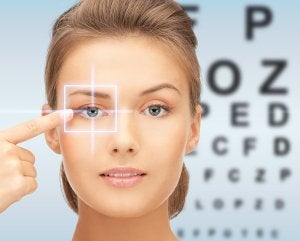 Amblyopia, also known as lazy eye, is an eye condition that develops during childhood. It can be diagnosed by an eye doctor or ophthalmologist. The condition can be corrected over time with an early diagnosis and your child’s commitment to your eye doctor’s recommended treatment method. If you’re worried that your child is developing amblyopia, visit an ophthalmologist near Chicago , and continue reading to learn about the condition’s symptoms and treatment options.
Amblyopia, also known as lazy eye, is an eye condition that develops during childhood. It can be diagnosed by an eye doctor or ophthalmologist. The condition can be corrected over time with an early diagnosis and your child’s commitment to your eye doctor’s recommended treatment method. If you’re worried that your child is developing amblyopia, visit an ophthalmologist near Chicago , and continue reading to learn about the condition’s symptoms and treatment options.
What is Amblyopia?
Amblyopia is a condition in which one eye is much weaker than the other one. As a result, the brain will only interpret the images that are received by the stronger eye, and the vision in the weaker eye will become worse and worse. You child can develop this condition at birth or at any point up until around 7 years of age. The younger your child receives treatment for the condition, the more successful the treatment will be. Amblyopia can be caused by genetics, low birth weight, strabismus, cataracts, or by being more nearsighted or farsighted in one eye than the other.
What are the Symptoms and How is the Condition Diagnosed?
The symptoms of amblyopia include an eye that wanders or looks in a different direction than the other eye, tilting the head or squinting to improve vision, an upper eyelid that droops, or crying and complaining when one eye is covered up. The condition is diagnosed by an eye doctor or ophthalmologist via an eye exam. The exam will demonstrate that the vision in one eye is worse than the vision in the other. No child is too young for an eye exam, so if you’re concerned that your child has amblyopia, make an appointment with an eye doctor as soon as possible.
How is the Condition Treated?
You child’s vision can be corrected if he begins using the weaker eye instead of the stronger one. The weaker eye will become stronger over time, and the vision in that eye will begin to get better. Your child’s eye doctor may make him wear an eye patch over the stronger eye.

